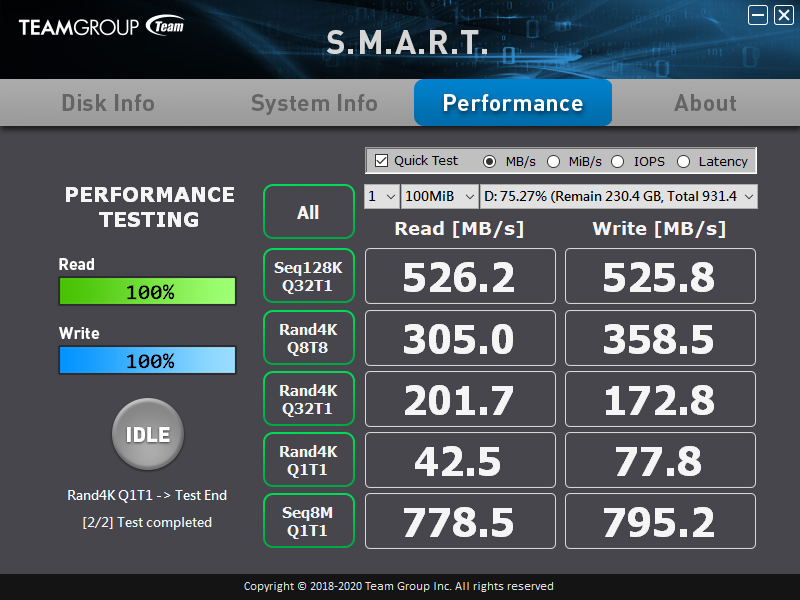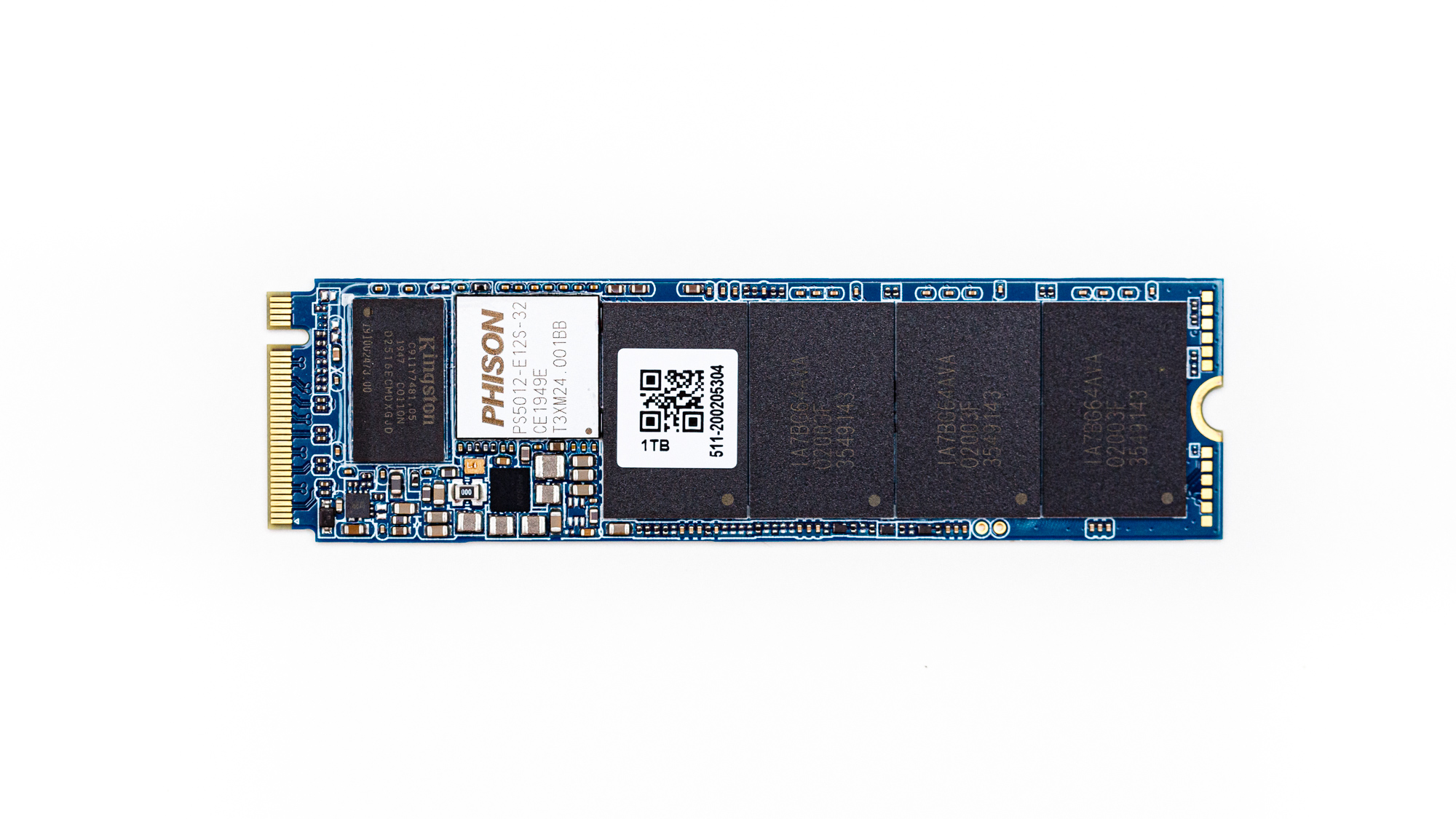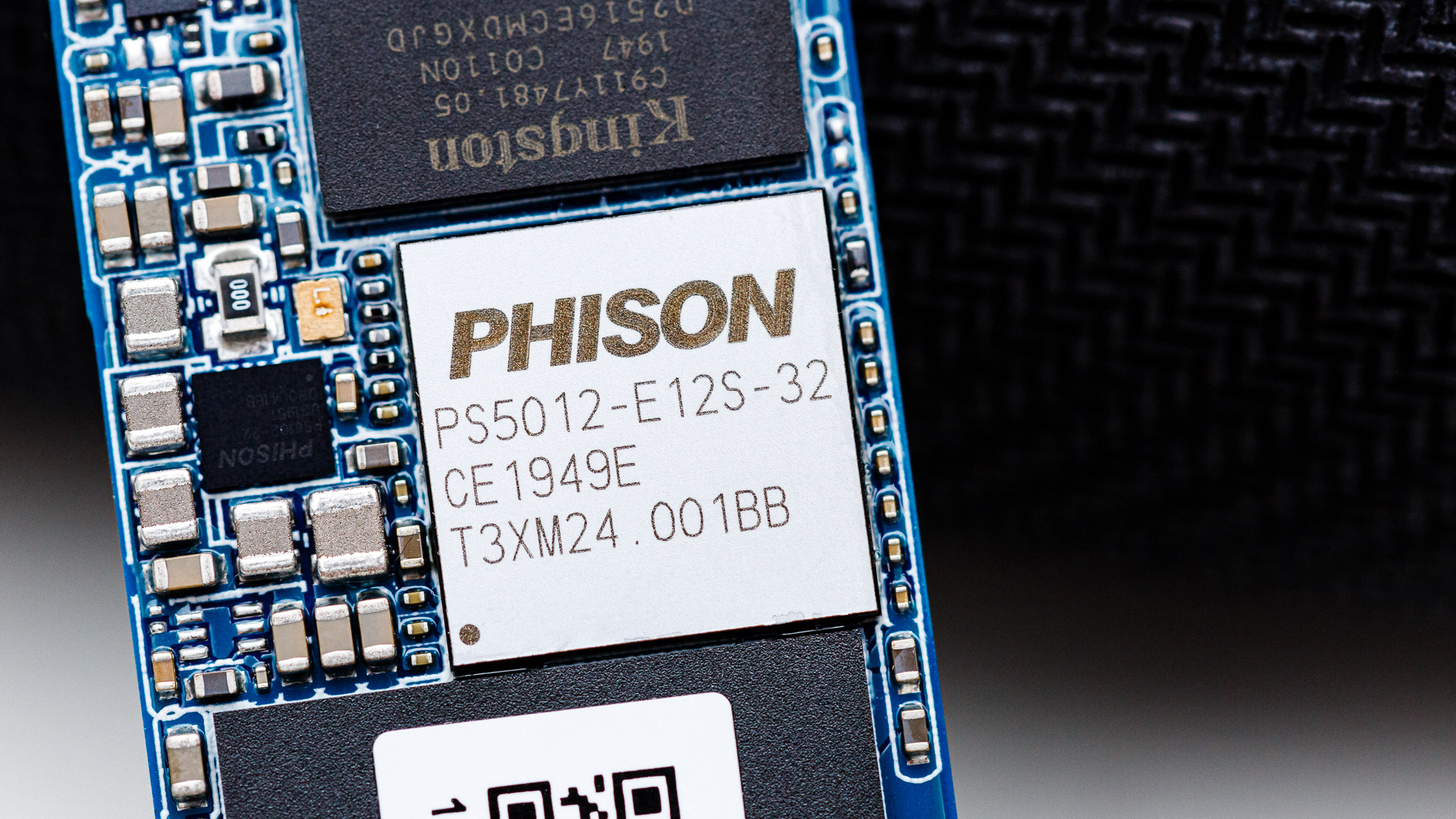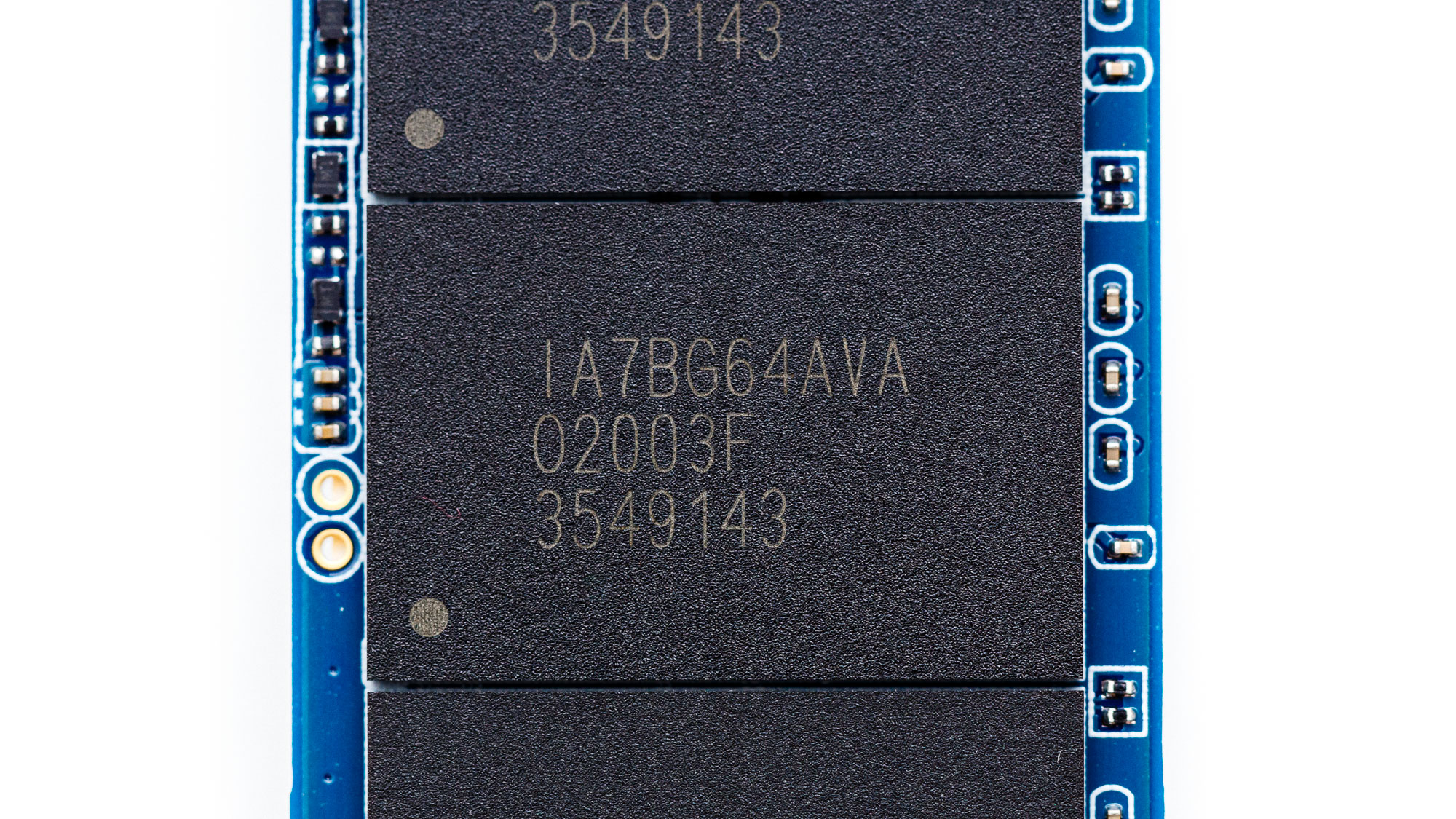Tom's Hardware Verdict
Team Group’s T-Force Cardea Zero Z340 SSD isn’t much more expensive than most entry-level M.2 SSDs, but with the latest mainstream hardware powering it, it’s a good choice for gamers looking to stretch their budget a bit for something more consistent and reliable.
Pros
- +
Competitive pricing, performance & efficiency
- +
Single-sided form factor
- +
5-year warranty & class-leading endurance ratings
- +
Graphene & copper heat spreader
Cons
- -
Blue PCB
- -
Heat spreader is very malleable
Why you can trust Tom's Hardware
Team Group’s T-Force Cardea Zero Z340 is a mainstream M.2 NVMe SSD comprised of one of the most untraditional hardware pairings we’ve ever tested in an SSD before. It also brings a unique and ultra-thin heat spreader made up of graphene and copper, which keeps the drive cool even in the least-optimal environments. The Cardea Zero Z340 is well worth a look, especially considering its competitive pricing.
With Micron’s 96L flash more readily available, Team Group has seized the opportunity to create a rather untraditional hardware combination to power the company’s Cardea Zero Z340. Traditionally, we’ve seen SM2262EN-based SSDs feature Micron’s flash, while Phison’s E12 has usually been paired with Kioxia’s (formerly Toshiba Memory) flash. Only a few have tried different NAND combinations.
One of the first manufacturers to go against the gain and switch things up a bit was Kingston in releasing the company’s KC2000, and even recently when refreshing the line with the updated KC2500. Leveraging Silicon Motion’s SM2262EN and Kioxia’s 96L flash, the KC2500 blew us away with its performance under some of the heavier prosumer-type workloads. By switching up the norm, the company was able to create something a little more powerful than competitors for its target market.
Team Group is trying to do the same here. By pairing Phison’s new E12S along with Micron’s 96L TLC in the Cardea Zero Z340, the company has brought to market a rather interesting drive. With the newest hardware powering it, Team Group’s Cardea Zero Z340 offers a unique performance profile unlike any we’ve seen before, and it is not only very responsive, it has a high endurance rating, too.
Specifications
| Product | Cardea Zero Z340 256GB | Cardea Zero Z340 512GB | Cardea Zero Z340 1TB |
|---|---|---|---|
| Pricing | $49.99 | $79.99 | $139.99 |
| Capacity (User / Raw) | 256GB / 256GB | 512GB / 512GB | 1024GB / 1024GB |
| Form Factor | M.2 2280 | M.2 2280 | M.2 2280 |
| Interface / Protocol | PCIe 3.0 x4 / NVMe 1.3 | PCIe 3.0 x4 / NVMe 1.3 | PCIe 3.0 x4 / NVMe 1.3 |
| Controller | Phison E12S | Phison E12S | Phison E12S |
| DRAM | DDR3L | DDR3L | DDR3L |
| Memory | Micron 96L TLC | Micron 96L TLC | Micron 96L TLC |
| Sequential Read | 3,000 MBps | 3,400 MBps | 3,400 MBps |
| Sequential Write | 1,000 MBps | 2,000 MBps | 3,000 MBps |
| Random Read | 200,000 IOPS | 350,000 IOPS | 450,000 IOPS |
| Random Write | 200,000 IOPS | 300,000 IOPS | 400,000 IOPS |
| Encryption | N/A | N/A | N/A |
| Endurance | 380 TB | 800 TB | 1,665 TB |
| Part Number | TM8FP9256G0C311 | TM8FP9512G0C311 | TM8FP9001T0C311 |
| Warranty | 5-Years | 5-Years | 5-Years |
Features
The Cardea Zero Z340 comes in capacities of 256GB, 512GB, and 1TB, and street prices run as low as $0.14-$0.20 per GB, which is very price competitive with Adata’s XPG SX8200 Pro, one of the best values available right now. In terms of performance, the smaller capacities are a bit limited on write performance compared to the 1TB model, but can still deliver very fast read performance. Team Group rates the Cardea Zero Z340 to deliver sequential throughput of up to 3.4/3.0 GBps, and under random workloads it can sustain up to 450,000/400,000 read/write IOPS.
Team Group’s Cardea Zero Z340 comes backed by some very high write endurance ratings within its five-year warranty. Thanks to its Phsion NVMe SSD controller with the company’s third-gen LDPC ECC, our 1TB sample can endure up to 1,665 TB of writes over its warranty period, which is nearly triple the rating of Samsung’s 970 EVO Plus or WD’s Black SN750. Additionally, we were able to quickly secure erase the SSD with our motherboard’s UEFI tool. And with Linux and, as well, Trim and S.M.A.R.T. data reporting are both supported, too.
Software and Accessories


Team Group provides a basic S.M.A.R.T. data reporting tool to view drive information. It even has a built-in benchmarking tool to test performance, similar to Crystal Disk Mark.
Get Tom's Hardware's best news and in-depth reviews, straight to your inbox.
A Closer Look
Team Group’s T-Force Cardea Zero Z340 comes in an M.2 2280 single-sided form factor, meaning all of the components are on one side of the PCB, for broad compatibility with ultra-thin mobile devices. It also features an extremely thin graphene and copper cooler design that uses graphene for thermal conduction and radiation while leveraging the copper for thermal capacity. The company measured the heat spreader to aid cooling by 9 percent while still letting you use the motherboard’s integrated heatsink if it has one.


The only downside to this material is that it is very flexible and will shape over the components underneath, rather than maintain a perfectly flat finish. Additionally, I was a bit disappointed to see a blue PCB rather than black, since even some of the company’s entry-level NVMe SSDs (Team Group MP33) come with black PCBs.
However, while the PCB’s color is less than exciting, the Phison E12S powering this little SSD is of much more interest. Built on dual ARM Cortex R5 processor cores operating at 666 MHz, alongside dual co-processors, the E12S is a very capable SSD controller. The R5s manage read/write requests while the co-processors operate at lower speeds and take care of some of the load for NAND management calculations for better efficiency.




It is also of a DRAM-based architecture for buffering FTL mapping tables and interfaces, with a Kingston 512MB DDR3L DRAM chip operating at 1,600 MHz, which is roughly half of the capacity that we have normally seen with the Phison E12. Additionally, the controller interfaces with sixteen dies of Micron’s 512Gb B27A 96L TLC NAND flash over eight NAND channels. There are four dies to a package, and these are 4-plane NAND dies operating at 666 MT/s. They feature a tile architecture that allows for 2KB tiles / 4KB tile groups for partial page reads and thus, very responsive random access, typically faster than cheaper 2-plane NAND designs.

Sean is a Contributing Editor at Tom’s Hardware US, covering storage hardware.
-
spentshells With no loyalty to brands, I am glad to see team group getting more widely supported. Quality products and very reasonable pricing.Reply -
oGudNite One of the first manufacturers to go against the gain and switch things up a bit... spell correction had fun againReply -
Takx Hey There, did you guys test this SSD with linux?Reply
I'm trying it on Ubuntu 20.04, and the write speed is super slow (1100 MB/s using XFS tried with Disks application on Ubuntu and FIO), on Windows (NTFS) it reached 3000 MB/s like advertised.
I don't know if this is a kernel issue or what, someone has any advice?